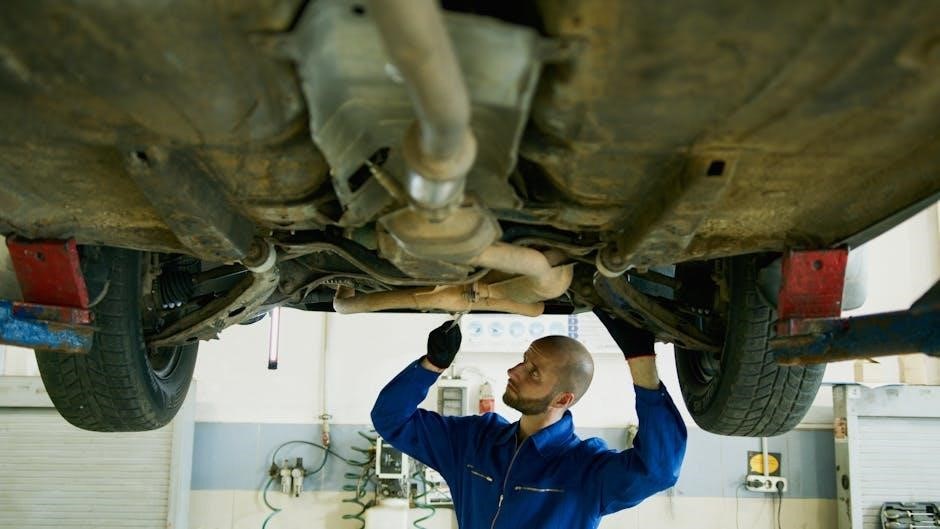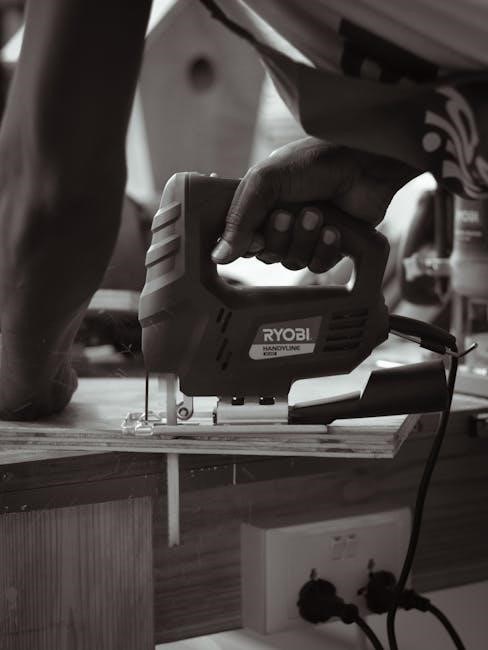honda element service manual
The Honda Element Service Manual is a comprehensive guide for maintaining and repairing your vehicle. It covers essential procedures, from oil changes to complex repairs, ensuring optimal performance and longevity. Designed for both DIY enthusiasts and professional mechanics, this manual provides detailed instructions, torque specifications, and wiring diagrams to help you troubleshoot and fix issues efficiently. By following the manual, you can keep your Honda Element in top condition, ensuring safety and reliability on the road.
Overview of the Honda Element
The Honda Element is a compact crossover SUV produced from 2003 to 2011, known for its boxy design and versatility. Targeted at young, urban buyers, it offered a practical blend of cargo space, durability, and off-road capability. The Element featured a 2.4-liter K24A inline-four engine, providing reliable performance. Its unique design included removable rear seats and a waterproof interior, making it ideal for outdoor enthusiasts. The Element gained a reputation for its ruggedness and ease of maintenance, supported by comprehensive service manuals. These manuals, available for various model years, offer detailed guidance for DIY repairs and professional servicing, ensuring the vehicle remains in peak condition throughout its lifespan.
Importance of the Service Manual
The Honda Element service manual is an essential resource for maintaining and repairing your vehicle. It provides detailed instructions, diagrams, and specifications to help you perform routine maintenance, diagnose issues, and execute repairs effectively. Whether you’re a DIY enthusiast or a professional mechanic, the manual ensures you have the knowledge to keep your Honda Element running smoothly. It covers everything from oil changes to complex system overhauls, helping you avoid costly mistakes and prolong the vehicle’s lifespan. Regular use of the service manual ensures optimal performance, safety, and reliability, making it an indispensable tool for any Honda Element owner.

Maintenance Schedule
The Honda Element service manual outlines a detailed maintenance schedule to ensure optimal vehicle performance. Regular oil changes, tire rotations, and inspections are essential for longevity and safety. Follow the recommended intervals for services like air filter replacements, belt checks, and fluid flushes. Proper adherence to the schedule helps prevent mechanical failures, reduces repair costs, and maintains fuel efficiency. Always refer to the manual for specific guidelines tailored to your vehicle’s make and model year. Staying on track with maintenance ensures your Honda Element runs reliably for years to come. Consistency is key to preserving its value and functionality.
Recommended Oil Change Intervals
The Honda Element service manual specifies oil change intervals to maintain engine health and performance. Typically, oil changes are recommended every 5,000 to 7,500 miles, depending on driving conditions. For standard driving, 5,000 miles is suggested, while severe conditions may require more frequent changes. Synthetic oil can extend intervals up to 10,000 miles, but always follow the manual’s guidelines. Regular oil changes prevent engine wear, improve fuel efficiency, and ensure longevity. Neglecting this maintenance can lead to premature engine damage and increased repair costs. Always use the oil type specified in the manual for optimal results. Timely oil changes are crucial for your Honda Element’s reliability and durability.
Tire Rotation and Pressure Guidelines
The Honda Element service manual recommends rotating tires every 5,000 to 8,000 miles to ensure even tread wear and improve handling. Use a rotation pattern specified for your vehicle, typically a rearward cross or forward cross method. Proper tire pressure is crucial for safety and efficiency. Check the recommended pressure in the owner’s manual or on the tire information placard on the driver’s doorjamb. Inflate tires when they are cold for accurate readings. Under-inflated tires can reduce fuel efficiency and increase wear. Regular checks and rotations help maintain optimal performance, stability, and tire longevity. Follow these guidelines to ensure your Honda Element runs smoothly and safely.

Common Repairs and Troubleshooting
The Honda Element often requires repairs for issues like faulty oxygen sensors, worn-out timing belts, and coolant leaks. Regular inspections and timely fixes prevent major breakdowns and ensure reliable performance. Troubleshooting common problems early can save costs and extend the vehicle’s lifespan. Always refer to the service manual for detailed diagnostic procedures and repair guidelines to maintain your Honda Element in optimal condition. Addressing these repairs promptly enhances safety, fuel efficiency, and overall driving experience. Proper maintenance is key to avoiding costly repairs and ensuring long-term reliability.
Timing Belt Replacement
The Honda Element’s timing belt is a critical component that synchronizes engine operations. Typically, replacement is recommended every 60,000 to 105,000 miles, depending on the model year and driving conditions. Neglecting this can lead to catastrophic engine damage if the belt fails. During replacement, inspect related components like the water pump and tensioner for wear. Always use genuine Honda parts or high-quality alternatives to ensure reliability. Consult the service manual for precise steps, as improper installation can void warranties or cause further issues. Timing belt replacement is a preventative measure that ensures smooth engine performance and avoids costly repairs down the road.
Diagnosing Coolant Leaks
Diagnosing coolant leaks in your Honda Element is crucial to prevent overheating and potential engine damage. Start by visually inspecting hoses, connections, and the radiator for signs of cracks, corrosion, or moisture. Check the coolant reservoir for low levels or droplets on the ground. Look for white streaks on engine components, indicating coolant leakage. Use a pressure test kit to identify leaks under pressure. Inspect the radiator cap for proper sealing and test the temperature gauge for abnormal readings. If leaks persist, consult the service manual for detailed troubleshooting steps, including checking the water pump and cylinder head gasket. Early detection ensures timely repairs and prevents costly damage.

Electrical System
The Honda Element’s electrical system is complex, ensuring proper functioning of lights, accessories, and controls. Regularly inspect the battery, alternator, and fuses to maintain reliability and performance;
Wiring Diagrams

Wiring diagrams are essential for diagnosing and repairing electrical issues in the Honda Element. They provide a detailed visual representation of the vehicle’s electrical circuits, including connectors, fuses, and components. These diagrams help identify wire colors, functions, and connections, making it easier to trace faults. The service manual includes comprehensive wiring diagrams for systems like the ignition, lighting, and audio. By referencing these diagrams, technicians can pinpoint issues quickly, ensuring accurate repairs. Additionally, wiring diagrams can be found online or through official Honda resources, offering a convenient solution for DIY enthusiasts and professionals alike. Always consult the latest version for accuracy and safety.
Troubleshooting Electrical Issues
Troubleshooting electrical issues in the Honda Element requires a systematic approach to identify and resolve faults. Start by checking the battery, alternator, and fuses, as these are common sources of electrical problems. Use a multimeter to test voltage and continuity in circuits. Consult the wiring diagrams in the service manual to trace connections and identify potential short circuits or open wires. Common issues include corroded connectors, blown fuses, or faulty relays. Always disconnect the battery before working on electrical systems to prevent shocks or damage. If a problem persists, consider scanning for error codes using an OBD-II scanner. Regular inspections and cleaning of electrical components can prevent many issues from arising.

Transmission and Drivetrain
The Honda Element’s transmission and drivetrain section covers maintenance and repair procedures for both automatic and manual gearboxes, including drivetrain components like axles and differentials.
Automatic Transmission Service
Regular servicing of the Honda Element’s automatic transmission ensures smooth gear shifting and longevity. The process includes checking the transmission fluid level, replacing the filter, and flushing the system if necessary. Use Honda ATF DW-1 fluid for optimal performance. Inspect the transmission pan for leaks and clean it thoroughly before reinstalling. Replace the filter every 30,000 to 60,000 miles, depending on driving conditions. If unusual noises or erratic shifting occur, diagnose the issue using an OBD-II scanner. While basic maintenance can be done at home, complex repairs may require a professional. Always refer to the service manual for specific guidelines and torque specifications to avoid damage.
Drivetrain Maintenance Tips
Regular drivetrain maintenance is crucial for the Honda Element to ensure optimal performance and prevent costly repairs. Inspect the axles and CV joints for wear or damage, lubricating them as needed. Check the differential fluid level and top it off with Honda-approved gear oil if necessary. Inspect the driveshaft and its components for excessive play or damage, ensuring all bolts are tightened to specifications. Grease the CV joints every 15,000 to 30,000 miles to maintain smooth operation. Avoid extreme temperatures or overload, as this can stress the drivetrain. If vibrations occur, have the driveshaft balanced professionally. Always refer to the service manual for torque specifications and guidelines.

Brakes and Suspension
Regular brake and suspension inspections ensure safety and stability. Inspect brake pads, rotors, and fluid levels, while checking suspension components for leaks or damage. Consult the manual for specifications.
Brake Pad Replacement
Brake pad replacement is essential for maintaining safe stopping performance. Begin by lifting the vehicle securely with jack stands and removing the wheels. Remove the caliper bolts and slide off the caliper, taking care not to damage the brake hose. Inspect the rotor for excessive wear or warping and replace if necessary. Install the new brake pads, ensuring proper alignment and lubrication of moving parts. Reattach the caliper and tighten the bolts to the specified torque. Test the brakes by driving slowly and applying gentle pressure. Always use genuine or high-quality replacement pads and follow the service manual for precise instructions.
Suspension System Inspection
The suspension system inspection ensures optimal vehicle stability and handling. Start by visually inspecting the shocks, struts, and springs for signs of wear or damage. Check the bushings and ball joints for excessive play or deterioration. Lift the vehicle and inspect the control arms and stabilizer links for rust or damage. Test the shocks by bouncing the vehicle; if it rebounds excessively, replacement may be needed. Inspect the coil springs for sagging or cracks. Lubricate all movable parts and tighten any loose bolts. A worn suspension can lead to poor ride quality and reduced safety, so address any issues promptly to maintain proper alignment and stability.

Engine and Performance
The Honda Element’s engine is built for both durability and efficiency, ensuring reliable performance. Regular maintenance as outlined in this manual is crucial for sustaining optimal engine function and maximizing efficiency.
Engine Oil Capacity and Type
The Honda Element requires 4.2 quarts of engine oil for a full drain and refill. Honda recommends using 5W-20 synthetic blend oil for optimal performance. Always check the oil level during routine maintenance to avoid overfilling or underfilling, as both can harm the engine. Synthetic oil is preferred for its superior lubrication and temperature resistance. Refer to the manual for specific guidelines, as oil capacity may vary slightly depending on engine type and model year. Proper oil selection ensures fuel efficiency, reduces wear, and prolongs engine life. Always use a high-quality oil filter to maintain cleanliness and flow.
Performance Tuning Tips
For optimal performance, consider upgrading to a high-quality air filter to improve airflow and engine efficiency. Spark plugs should be replaced with iridium or platinum-tipped versions for better ignition and fuel efficiency. Regularly check and clean the mass airflow sensor to ensure accurate engine performance. Adjusting the engine tuning parameters can enhance power output, but always refer to the service manual for safe modifications. Upgrading the exhaust system to a high-flow design can reduce backpressure and improve horsepower. Additionally, ensuring proper wheel alignment and tire balance can enhance handling and stability. Always consult the manual or a professional before making significant changes to avoid engine damage.

Where to Download the Manual
Visit the official Honda website or authorized dealerships for the genuine service manual. Third-party automotive forums and repair websites also provide access to downloadable versions.
Official Honda Websites
The official Honda website provides direct access to the Honda Element service manual. Users can visit Honda’s official portal, create an account, and search for the specific manual by entering the vehicle’s VIN or model details. The manual is typically available in downloadable PDF format, ensuring easy access for printing or digital reference. Honda’s official site guarantees authenticity and accuracy, making it the most reliable source. Additionally, some Honda dealerships offer digital copies of the service manual upon request. This method ensures users receive the most updated and relevant information tailored to their vehicle, free from third-party alterations or errors.
Third-Party Sources
Besides official channels, third-party websites offer access to the Honda Element service manual. Platforms like forums, repair manuals archives, and independent automotive websites often host downloadable versions. These sources may provide free or paid access, depending on the site. While convenient, users should exercise caution, as some manuals may be outdated or incomplete. It’s essential to verify the credibility of the source to ensure accuracy. Additionally, some independent repair shops or enthusiasts share scanned copies online, which can be helpful but may lack official updates. Always cross-check the information with trusted sources to avoid potential errors during repairs or maintenance.

Safety Precautions
Always wear protective gear, ensure the vehicle is on level ground, and disconnect the battery before starting repairs. Use jack stands for added stability and safety.
Follow proper lifting techniques, keep loose clothing tied back, and avoid working near open flames or sparks. Ensure all tools are in good condition.
General Safety Tips
When working on your Honda Element, always prioritize safety to avoid injuries and damage. Wear protective eyewear, gloves, and closed-toe shoes. Ensure the vehicle is on level ground and apply the parking brake. Disconnect the battery before performing electrical work to prevent short circuits. Use jack stands for added stability when lifting the vehicle. Keep tools and materials organized to avoid tripping hazards. Properly ventilate the workspace, especially when dealing with chemicals or painting. Follow the manufacturer’s instructions for all repairs and maintenance. Never work under a lifted vehicle without proper support. Keep children and pets away from the workspace. Stay alert and avoid working when fatigued.
- Always refer to the Honda Element service manual for specific safety guidelines.
- Be aware of potential hazards like hot engine parts or sharp edges.
- Dispose of waste materials responsibly.
Tools and Equipment Needed
Tools and Equipment Needed
To perform maintenance and repairs on your Honda Element effectively, gather the necessary tools and equipment. Essential tools include a socket set, wrenches, screwdrivers, pliers, and a torque wrench. A multimeter is useful for diagnosing electrical issues. Jack stands and a hydraulic jack are required for lifting the vehicle safely. Keep a drain pan and funnels handy for oil changes and fluid refills. Tire pressure gauges ensure proper inflation, while a timing light aids in engine diagnostics. A set of penetrating oil and a wire brush can help with rusty components. Always use high-quality tools to avoid damage and ensure precise adjustments. Refer to the service manual for specific tool recommendations for each task.
- A comprehensive toolkit tailored to your Honda Element’s specifications is crucial.
- Invest in a service manual-specific toolset for complex procedures.
- Regularly inspect tools for wear and replace them as needed.











Leave a Comment